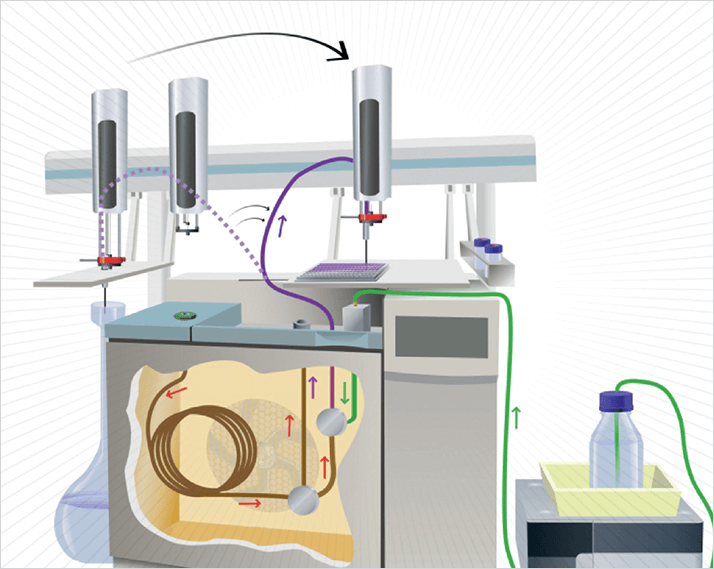Gas chromatography’s extremely high separation power makes it a popular analytical technique. And, in principal, GC could also be highly suited to compound purification and preparative purposes; for example, toxicity testing or flavor analysis. Unfortunately, going from an idea to a working platform is not always straightforward and fraction collection is complex – a gas is simply not easy to collect! In the past, several GC fractionation systems have been developed, based on adsorbent traps or more popular rapid column eluate cooling, but complexity and limitations have slowed progress. For example, one of the issues with rapid cooling of the column eluate is potential precipitation of the analyte, meaning potential loss via aerosol formation. Another general problem is the limited number of fractions that can be collected.

We believe that the ability to collect each peak in the chromatogram would re-focus interest on this area. To that end, we developed a new approach that circumvents trapping by adsorption or cooling (see Figure 1). Furthermore, simultaneous flame ionization detection (FID) allows us to later correlate the content of a fraction to a peak in the chromatogram. The platform consists of a standard GC-FID with autosampler. First, the sample is injected onto the column. The end of the column is connected to a flow splitter that directs a small part towards the FID. The rest goes to a second split where “the magic” happens. At this split, a preheated volatile solvent (heated by a modified FID) is mixed with the column eluate and guided via a capillary outside the GC oven. Once outside, the volatile solvent containing the separated analytes condenses and is collected in microtiter plates. The capillary is attached to a fraction collection tip that moves with short time intervals from one well to another, collecting the whole separation – up to 384 seven-second fractions. We are in the final stages of transforming our platform from a proof of principle setup into a robust system.
Currently, one of our applications is bioactivity screening of environmental matrices via a so called effect-directed analysis (EDA) approach. In EDA, bioassay testing is combined with chemical analysis for the detection of newly emerging toxicants. The flow scheme is illustrated in Figure 2. After fraction collection, the well plate is used for bioassay testing and a bioassay chromatogram is generated by connecting the response of each well to a retention time. The bioassay chromatogram can then be directly correlated to the FID chromatogram, enabling us to easily pinpoint bio-actives.

Thus far, we have successfully used the platform in combination with the acetylcholine esterase assay for the detection of carbaryl and aldicarb, and two functional gene reporter assays for the detection of dioxin-like and androgenic compounds. This direct comparison would not have been possible with previously developed setups because the number of fractions that can be collected are limited. Besides EDA and toxicology studies, we also see potential for applications in other analytical research fields, for example, flavors and fragrances in the cosmetics and food industries. Another possibility is the purification of an organic synthesis product for NMR analysis; purification could be performed by repeated injections of the sample followed by fraction collection in the same well plate.
Furthermore, applications in drug discovery research can be envisioned in terms of bioactive compound screening. Using the platform we developed, sample complexity can be reduced and bioactive(s) of interest can be revealed. Such use of gas chromatography opens up a whole new world of compounds for purification and bioassay testing. We hope that our platform may become a valuable tool for future research and that other analytical chemists share our interest.
Willem Jonker is a PhD student and Jeroen Kool is Assistant Professor at VU University Amsterdam, The Netherlands.




